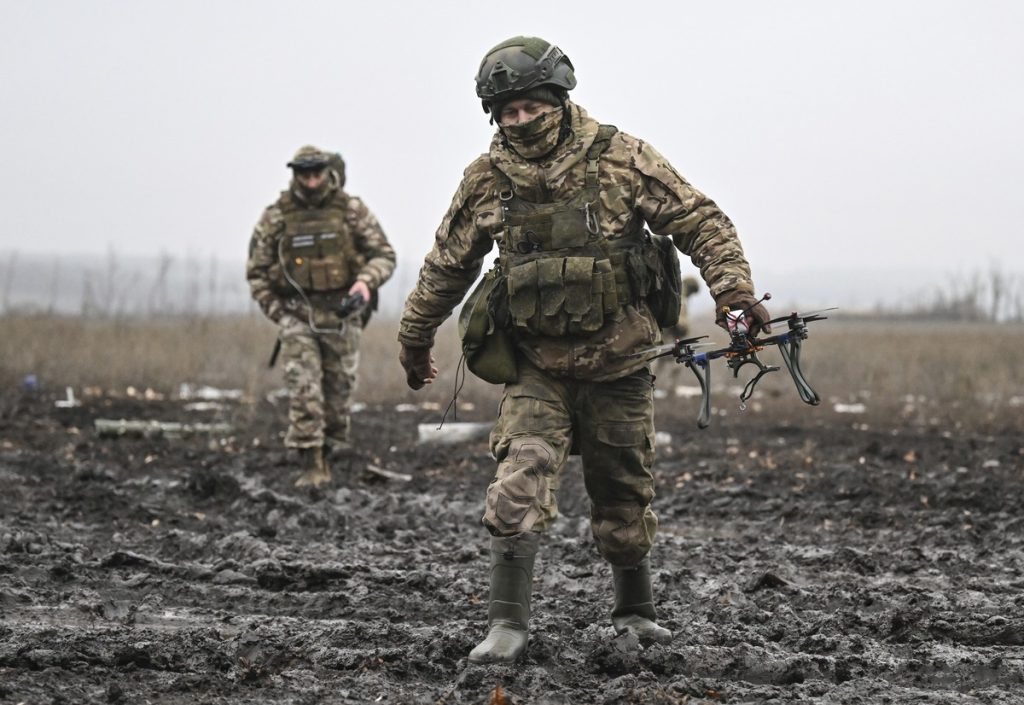The ongoing conflict in Ukraine has placed immense strain on the medical and personnel resources of both Russia and Ukraine. While both sides grapple with maintaining troop numbers, Russia’s tactics, heavily reliant on infantry assaults, have led to significantly high casualty rates, exacerbating the strain on its military medical system. Reports, including assessments from the British Ministry of Defense, suggest that Russia is resorting to deploying wounded soldiers back to the front lines, often before their injuries have fully healed. This practice underscores the desperate measures Russia is taking to maintain its fighting force amid mounting losses.
The British Defense Ministry’s intelligence update paints a grim picture of the Russian military medical system, describing it as “overburdened” and struggling to cope with the influx of injured soldiers. Footage circulating online, purportedly showing wounded Russian soldiers on crutches heading towards the front lines, lends credence to these assessments. The ministry suggests that these soldiers are being integrated into “assault groups made up of walking wounded,” highlighting the extent to which Russia is willing to utilize injured personnel to maintain its offensive capabilities. This practice raises serious ethical and logistical concerns, potentially impacting the effectiveness and morale of these units.
The sheer number of casualties suffered by the Russian military further underscores the severity of the situation. While estimates vary, Ukrainian figures suggest that the Kremlin has sustained over 841,000 casualties since the start of the full-scale invasion. Even conservative estimates from Western intelligence agencies align broadly with these numbers, indicating hundreds of thousands of Russian soldiers requiring medical treatment. The British Ministry of Defense estimates that over 400,000 Russian soldiers have likely needed treatment away from the front lines, further straining an already overwhelmed system.
The pressure on the Russian military medical system is so acute that commanders are reportedly discharging injured personnel prematurely from forward medical facilities and sending them back to their units. This practice, driven by the need to alleviate the burden on the medical system and maintain troop numbers, raises concerns about the adequacy of care received by these soldiers. Returning soldiers with unhealed wounds to combat not only jeopardizes their health and recovery but also raises questions about their combat effectiveness and the overall impact on unit morale.
The redeployment of wounded soldiers also shifts the administrative and medical burden back onto their units, compounding the challenges faced by frontline troops. Units are forced to manage the ongoing medical needs of these soldiers, diverting resources and attention from other critical tasks. This practice highlights the systemic issues within the Russian military medical system and its inability to provide adequate care and rehabilitation for its injured personnel.
The continued reliance on infantry-heavy tactics, coupled with the high casualty rate and the redeployment of wounded soldiers, paints a bleak picture of the Russian military’s current state. These practices, born out of necessity, may ultimately prove counterproductive, impacting morale, combat effectiveness, and further stressing an already overburdened medical system. The long-term implications of these practices remain to be seen, but they underscore the challenges Russia faces in sustaining its war effort in Ukraine. The situation also raises serious questions about the well-being of Russian soldiers and the ethical implications of sending injured personnel back into combat before they have fully recovered.










